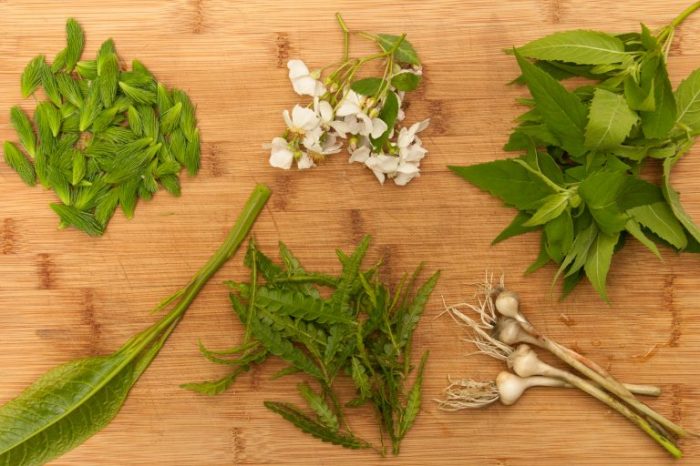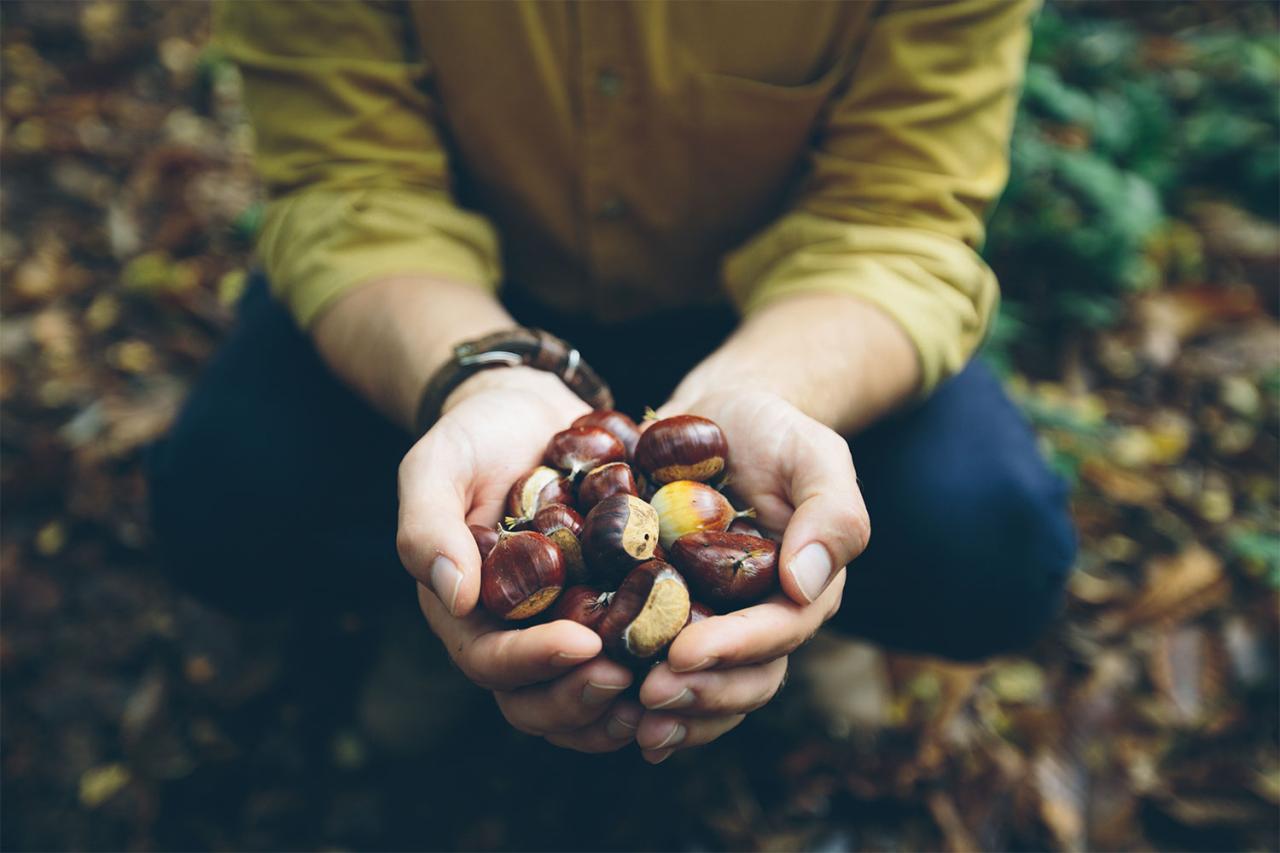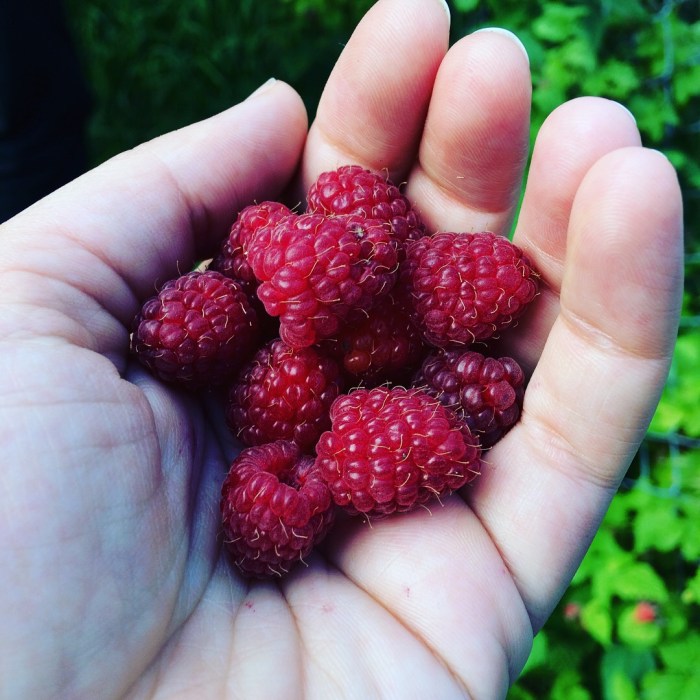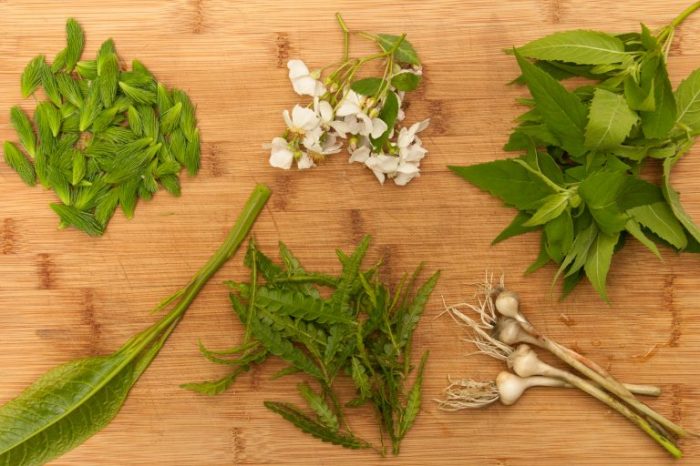
Online foraging tutorials open up a world of possibilities, allowing you to delve into the realm of foraging right from your screen. Dive into a virtual journey filled with knowledge, skills, and a newfound appreciation for nature.
As you explore the different facets of foraging in the digital landscape, you’ll uncover a treasure trove of information waiting to be discovered and applied in your everyday life.
Introduction to Online Foraging Tutorials
Online foraging tutorials are educational resources available on the internet that aim to teach individuals about the practice of foraging for wild edible plants, mushrooms, and other resources. These tutorials provide valuable information on identifying, harvesting, and preparing foraged foods.
Having knowledge of foraging is essential for anyone interested in sustainable living, self-sufficiency, or simply reconnecting with nature. Understanding which plants are safe to eat and how to properly harvest them can greatly enhance one’s outdoor experience and overall well-being.
Benefits of Learning Foraging Skills Online
Learning foraging skills online offers several advantages, making it a convenient and accessible way to acquire this valuable knowledge:
- Convenience: Online tutorials allow individuals to learn at their own pace and from the comfort of their own home, eliminating the need for in-person classes or workshops.
- Accessibility: Online resources make foraging knowledge readily available to a wide audience, regardless of geographic location or physical limitations.
- Comprehensive Information: Online tutorials often provide detailed explanations, images, and videos to help learners fully understand the foraging process and plant identification.
- Community Engagement: Online platforms create opportunities for foragers to connect with like-minded individuals, share experiences, and seek advice from experts in the field.
Types of Online Foraging Tutorials
Online foraging tutorials are available on various platforms, catering to individuals interested in learning about wild edibles and medicinal plants. These tutorials can vary in terms of accessibility, content quality, and interactive features. Let’s explore the different types of online foraging tutorials:
Platforms Offering Online Foraging Tutorials
- Websites: Many websites dedicated to foraging provide tutorials, articles, and videos for free or through paid subscriptions.
- YouTube Channels: Several YouTube channels offer video tutorials on foraging, showcasing identification techniques and recipes using wild plants.
- Online Courses: Platforms like Udemy, Coursera, and Skillshare host online courses on foraging, covering a wide range of topics in depth.
- Social Media: Foraging experts and enthusiasts often share valuable tips and tutorials on platforms like Instagram and Facebook.
Free vs. Paid Tutorials
- Free Tutorials: Many websites and social media platforms offer free foraging tutorials, making valuable information accessible to a wider audience.
- Paid Tutorials: Online courses and premium content may require a fee, but they often provide in-depth knowledge, interactive activities, and expert guidance.
- Pros and Cons: While free tutorials are budget-friendly, paid tutorials can offer structured learning, certification, and personalized support from instructors.
Interactive Features in Online Tutorials
- Quizzes and Assessments: Some online foraging tutorials include quizzes to test knowledge retention and ensure understanding of key concepts.
- Discussion Forums: Platforms with interactive features allow learners to engage with instructors and peers, seeking clarification and sharing experiences.
- Virtual Field Trips: Advanced tutorials may offer virtual field trips, allowing participants to explore different foraging locations and practice identification skills.
Learning Resources in Online Foraging Tutorials
Online foraging tutorials provide valuable learning resources for individuals interested in exploring the world of wild edibles. These tutorials often emphasize the importance of having the right tools, knowledge of common plants and fungi, and safety measures to ensure a successful foraging experience.
Essential Tools for Foraging
Before venturing into the wild to forage for edible plants and fungi, it is essential to have the right tools to aid in identification and collection. Some common tools recommended in online tutorials include:
- A field guide specific to your region to help identify plants and fungi accurately.
- A sharp knife for harvesting and cutting plants safely.
- A basket or container to collect and carry foraged items.
- Gloves to protect your hands from thorns, stinging plants, or toxic substances.
Common Plants and Fungi Covered in Tutorials
Online foraging tutorials often cover a range of common edible plants and fungi that are safe for consumption. Some examples of plants and fungi frequently discussed in tutorials include:
- Dandelions, known for their nutritious leaves and flowers that can be used in salads or teas.
- Morel mushrooms, prized for their distinctive flavor and appearance in the spring.
- Wild berries such as blackberries and raspberries, which are abundant in many regions and make delicious treats.
- Chanterelle mushrooms, recognized for their fruity aroma and meaty texture when cooked.
Safety Measures Emphasized in Online Tutorials
Foraging in the wild requires caution and awareness to avoid consuming toxic or harmful plants. Online tutorials often stress the following safety measures to ensure a safe foraging experience:
- Always positively identify plants and fungi before consumption to avoid accidental poisoning.
- Do not forage in areas that may be contaminated with pesticides, herbicides, or other chemicals.
- Avoid picking plants close to roadsides or industrial sites where pollution may be a concern.
- Consult with experienced foragers or experts if you are uncertain about the identification of a plant or fungus.
Practical Applications of Online Foraging Skills: Online Foraging Tutorials
Online foraging tutorials have empowered individuals to apply their knowledge in real-life scenarios, leading to successful outcomes and sustainable practices.
Success Stories of Individuals Applying Online Foraging Knowledge
Many individuals have shared inspiring success stories after learning from online foraging tutorials. For example, Jane, a novice forager, used her newfound skills to identify edible plants in her backyard, leading to a unique and delicious salad. This not only boosted her confidence but also connected her with nature in a meaningful way.
Sustainable Foraging Practices Promoted in Tutorials
- Emphasizing ethical foraging practices, such as harvesting only what is needed and leaving no trace behind in the environment.
- Encouraging foragers to respect wildlife habitats and biodiversity while gathering wild edibles.
- Promoting the use of sustainable foraging tools and techniques to minimize impact on natural ecosystems.
Tips on Integrating Foraging into Everyday Life
- Start small by foraging for common edible plants in your local area, such as dandelions or wild berries.
- Learn to properly identify plants and mushrooms through online resources and field guides to ensure safe foraging practices.
- Experiment with incorporating foraged ingredients into your meals to add a unique and sustainable twist to your diet.
Outdoor Activities

Foraging can greatly enhance outdoor experiences by allowing individuals to connect with nature in a unique and hands-on way. Whether you are hiking through the woods or camping in the wilderness, foraging can add an exciting element to your outdoor adventures.
It not only provides an opportunity to learn about the ecosystem and the plants around you but also allows you to gather fresh and natural ingredients for your meals.
Safe Foraging Practices in Outdoor Settings
- Always positively identify plants before consuming them. Use guidebooks or online resources to help you accurately identify edible plants.
- Avoid foraging near roadsides, industrial areas, or places where chemicals may have been used, as these plants may be contaminated.
- Respect nature and only take what you need. Be mindful of the ecosystem and leave no trace of your presence.
- Be cautious of poisonous plants and know how to differentiate them from edible ones. Educate yourself on the potential risks in the area you are foraging.
- Consider taking a foraging workshop or going on a guided foraging tour to learn from experts and ensure a safe experience.
Travelling and Hotels
When it comes to traveling, foraging skills can be incredibly useful in various ways. Not only can you connect with nature and learn about the local flora, but you can also find edible plants to enhance your travel experience. Additionally, utilizing foraging skills during hotel stays can provide a unique way to explore the surrounding area and engage with the environment in a meaningful way.
Finding Edible Plants in Different Travel Destinations
- Foragers with knowledge of edible plants can identify and harvest local vegetation, adding a culinary adventure to their travels.
- Exploring the surroundings of different travel destinations can lead to discovering new flavors and ingredients that are unique to the region.
- Foragers can create delicious meals using wild edibles found during their travels, enhancing their overall experience and connection to the environment.
Utilizing Foraging Skills During Hotel Stays
- While staying at hotels, foragers can explore nearby parks, gardens, or wooded areas to practice their foraging skills and discover edible plants.
- Identifying and harvesting wild edibles during hotel stays can provide a sense of connection to the local environment and promote sustainable practices.
- Foragers can share their knowledge and experiences with hotel staff and other guests, raising awareness about the benefits of foraging and the importance of sustainable food practices.
Holidays and Vacations
Foraging can be a fun and rewarding activity to incorporate into your holiday and vacation plans. Whether you are exploring a new city or relaxing in the countryside, foraging can add an exciting element to your travel experience.
Ways to Incorporate Foraging into Holiday Activities
- Research local foraging spots before your trip to see what edible plants or mushrooms are in season.
- Join a guided foraging tour in the area to learn about the local flora and fauna.
- Visit farmers markets or specialty food stores to sample foraged goods from the region.
- Organize a foraging excursion with friends or family as a unique holiday activity.
Benefits of Foraging During Vacations
- Connect with nature and learn about the local ecosystem while foraging.
- Save money on food costs by foraging for fresh ingredients instead of dining out every meal.
- Expand your culinary skills by experimenting with new and unique ingredients found during foraging.
- Create lasting memories and stories to share with others from your foraging experiences on vacation.
Unique Foraging Experiences During Holidays
One unique foraging experience during holidays is participating in a mushroom foraging expedition in a forest known for its diverse fungi species. Another memorable experience is coastal foraging along the seashore, where you can discover edible seaweed and shellfish to incorporate into your meals.
Additionally, urban foraging in a bustling city can lead to finding hidden edible treasures in parks and green spaces. These unique foraging experiences can truly enhance your holiday adventures and provide a deeper connection to the environment.
Vacation Plans
Planning a foraging-focused vacation can be an exciting and rewarding experience. It allows you to connect with nature, learn about local flora and fauna, and explore new environments. Here are some tips to help you plan a successful foraging vacation:
Choosing a Travel Destination
When choosing a travel destination for foraging, consider the following factors:
- Climate and Season: Research the climate and seasons of the destination to determine the best time for foraging.
- Local Laws and Regulations: Make sure to familiarize yourself with any restrictions or regulations regarding foraging in the area.
- Biodiversity: Look for destinations with a diverse range of plant species to explore different foraging opportunities.
Finding Foraging-Friendly Vacation Spots
To find foraging-friendly vacation spots, consider the following resources:
- Local Foraging Groups: Join local foraging groups or communities to get recommendations on foraging-friendly destinations.
- Online Forums and Websites: Explore online forums and websites dedicated to foraging to discover hidden gems for your next vacation.
- Guidebooks and Publications: Check out guidebooks and publications that focus on foraging to find curated lists of foraging-friendly spots.
Travel Spot
When it comes to exploring travel spots for foraging enthusiasts, there are several popular destinations that offer a diverse range of foraging opportunities. Each region has its own unique flora and fauna, providing foragers with a variety of plants, mushrooms, and other natural resources to discover and enjoy.
It is important for foragers to be aware of local regulations and guidelines related to foraging in these travel spots to ensure they are respecting the environment and following the rules.
Popular Foraging Destinations
- Pacific Northwest, USA: Known for its abundant forests and coastline, the Pacific Northwest offers a wide array of edible plants and mushrooms for foragers to explore.
- Scandinavian Countries: Countries like Sweden and Finland have rich foraging traditions, with opportunities to gather berries, mushrooms, and wild herbs in their expansive forests.
- Mediterranean Region: With its diverse landscapes, the Mediterranean region provides foragers with a mix of coastal foraging options and inland treasures like wild greens, herbs, and fruits.
Local Regulations and Guidelines, Online foraging tutorials
- Always obtain permission before foraging on private land.
- Respect protected areas and endangered species by not foraging in restricted areas.
- Be mindful of the quantity and type of plants you harvest to ensure sustainable foraging practices.
Best Travel Backpack
When it comes to foraging, having the right backpack can make a huge difference in your overall experience. A good travel backpack should not only be durable but also have enough storage capacity to hold all your essentials while exploring the outdoors.
Features of a Travel Backpack Suitable for Foraging
- Water-resistant material to protect your belongings from unexpected weather conditions.
- Multiple compartments and pockets for organizing different items such as foraged goods, water bottles, and tools.
- Padded shoulder straps and back panel for comfortable carrying, especially during long hikes.
- Adjustable straps and buckles to secure the backpack and prevent items from shifting.
- Built-in hydration system or compatibility with a hydration reservoir for easy access to water on the go.
Importance of Durability and Storage Capacity
Durability is crucial for a travel backpack used in foraging as it will be exposed to rough terrain, branches, rocks, and other outdoor elements. A sturdy backpack can withstand these challenges and last for multiple trips. Additionally, having sufficient storage capacity ensures that you can carry all the necessary items without feeling weighed down or unorganized.
Options for Specialized Backpacks Designed for Foraging Purposes
- A foraging backpack with an integrated harvest pouch for storing fresh fruits, vegetables, or mushrooms.
- A backpack with a detachable lightweight frame for carrying larger items or heavier loads.
- A backpack with a removable waterproof cover to protect your belongings from rain or moisture.
- A backpack with adjustable straps and compression features to customize the fit based on the amount of items you are carrying.
Travel Tip
When exploring new locations as a forager, it’s important to be prepared and organized. Here are some travel tips to help you make the most of your foraging experience:
Packing Tips for Foraging Equipment and Supplies
- Pack lightweight and compact foraging tools to save space in your luggage.
- Bring essential supplies like gloves, bags, containers, and a field guide for identifying plants.
- Consider packing a portable water filter or purification tablets for safe drinking water while foraging.
Ways to Stay Organized While Foraging During Travels
- Create a foraging kit with all necessary tools and supplies stored in a waterproof bag or container.
- Keep a journal or notebook to record your findings, locations, and any important notes while foraging.
- Plan your foraging routes in advance and research local regulations or restrictions on foraging in the area.
Travel News

Stay up to date with the latest trends and news in the world of foraging and travel.
Recent Developments in Foraging Regulations
- Some regions have implemented new regulations to protect natural habitats and ensure sustainable foraging practices.
- It is important for foragers to research and understand local regulations before embarking on any foraging activities.
- Illegal foraging can have serious consequences, including fines and damage to ecosystems.
Innovative Travel Experiences
- Some travel companies are now offering unique foraging experiences as part of their tours.
- Travelers can learn about local plants and herbs while exploring new destinations.
- This trend allows for a deeper connection to nature and the environment during travel experiences.
Best Travel Destinations

When it comes to foraging adventures, there are several top destinations around the world that offer unique flora and fauna for travelers to explore. These destinations not only provide a rich foraging experience but also offer breathtaking landscapes and cultural experiences.
Let’s dive into some of the best travel destinations for foraging enthusiasts.
1. Pacific Northwest, USA
The Pacific Northwest region in the United States is a paradise for foragers, with lush forests, diverse ecosystems, and a variety of edible plants and mushrooms. Travelers can explore the forests of Oregon, Washington, and British Columbia to discover unique flora such as morel mushrooms, huckleberries, and fiddlehead ferns.
2. Tasmania, Australia
Tasmania, an island state of Australia, is known for its pristine wilderness and abundant natural resources. Foragers can find a wide range of edible plants, berries, and fungi in the forests of Tasmania, including native bush foods like wattleseed, pepperberry, and myrtle.
3. Provence, France
Provence in France is not only famous for its lavender fields and vineyards but also for its culinary delights. Foragers can explore the countryside to find wild herbs, edible flowers, and truffles, making it a perfect destination for food enthusiasts looking to experience the flavors of the region.
4. New Zealand
New Zealand is a treasure trove of unique flora and fauna, with diverse landscapes ranging from beaches to mountains. Foragers can discover native plants like kawakawa, horopito, and pikopiko ferns, as well as a variety of wild berries and mushrooms scattered throughout the country.
5. Amazon Rainforest, Brazil
For a truly immersive foraging experience, the Amazon Rainforest in Brazil offers a rich biodiversity of plant species and exotic fruits waiting to be discovered. Travelers can learn from local indigenous communities about sustainable foraging practices and the medicinal properties of various plants found in the rainforest.These top travel destinations for foraging adventures not only provide a unique opportunity to connect with nature but also offer a glimpse into the diverse ecosystems and cultural heritage of each region.
Foragers can explore these destinations with a sense of wonder and appreciation for the natural world around them.
Wrap-Up
Embark on your foraging journey with newfound confidence and insight, equipped with the tools and resources necessary to navigate the wilderness of online tutorials. Let the adventure begin as you embrace the art of foraging in all its glory.
General Inquiries
How can online foraging tutorials enhance my outdoor experiences?
Online foraging tutorials provide valuable knowledge and skills that can enrich your outdoor adventures by helping you identify edible plants and fungi, ensuring a safe and enjoyable foraging experience.
What are the benefits of integrating foraging into everyday life?
By incorporating foraging into your daily routine, you not only develop a deeper connection with nature but also gain a sustainable and rewarding way to source food while exploring the outdoors.





